The most profitable bank in the country - NMB Bank,handed over TZS 16.5 billion dividend to the government on over the weekend as part of the banks profit after tax for 2015.
The most profitable bank in the country - National Microfinance Bank Plc, handed over TZS 16.5 billion dividend to the government on over the weekend as part of the banks profit after tax for 2015.
Handing over a dummy cheque to the Minister of Finance and Planning – Dr Philip Mpango, the NMB Managing Director - Ms Ineke Bussemaker said the money channeled to the government is part of the 31.9% share it holds in NMB. The money comes a day after the government tabled the National budget for the 2016/2017 financial year.
Ms Ineke said it was in the best interest of the bank to double profit by 2020 so that it could dish out a dividend of TZS 33 Billion to the government. “We are strong bank with a strong balance sheet,” said Bussemaker, adding that the country has a conducive environment for the banking sector to grow. The government has a 31.9 percent share in NMB bank.
Receiving the dividend, the Minister of Finance and Planning - Dr. Philip Mpango said he was happy to receive the dividend calling other companies in which the government has shares to emulate the practice shown by NMB.
“I am a happy man today, now I am going to be the minister of finance and not the minister of debts, “joked DR Mpango after receiving a TZS 16.5 Billion Dividend.
At the annual general meeting held in Dar es Salaam a week ago, shareholders approved TZS 52 Billion dividend to be distributed to shareholders which is an equivalent of TZS 104 dividend per share. The dividend is part of NMB’s profit after tax of TZS 150.2 Billion.
NMB is one of the government’s privatized companies that is bearing fruits and for the past 5 years TZS 226 Billion dividend has been dished out by NMB to the government making the bank the largest contributor to the government budget amongst financial instutions.
The bank has the widest network of branches with over 176 branches and over 600 ATMs spread in over 95% of all the districts in Tanzania. NMB also has the largest number of customers, reaching at least 2.1 million customers, which is about 40% of all Tanzanians who have a bank account with NMB. This number is a reflection of how NMB is the preferred financial provider in Tanzania and a trusted partner of the government.
NMB works closely with the government by playing a vital role to support the government’s agenda in improving the country’s economy through financial inclusion, CSR initiatives and through the collection of government revenue in local councils and districts.
Financial Results
At the bank’s Annual General Meetung, NMB Chief Financial Officer – Waziri Barnabas, made a presentation to the shareholders of NMB on the progress made by the bank in 2015. He said “Once again this year NMB Plc has achieved a fairly impressive financial results.
The CFO, Waziri Barnabas added: “It is therefore with great pleasure that I can report that the banks financials have continued its momentum, with stronger top line growth and higher balance sheet growth of 18% to reach total assets of TZS 4.5 Trillion”. The bank has also continued to gain market share in loans and deposits and spectacular Key Performance Indicators (KPIs):
- 5% Organic Interest income growth from TZS 417 Billion in 2014 to TZS 438 Billion in 2015.
- 18% Organic non-funded income growth from TZS 144 Billion in 2014 to TZS 170 Billion in 2015
- The increase in cost of funding and high exchange rates, reduced profit after tax (PAT) to TZS 150 Billion being 4% slightly below last year’s PAT of TZS 155 Billion, however, operating income have maintained at the same growth levels as last year at TZS 472 Billion.
- Non-Performing Loans (NPL) ratio of 2% lower than previous year by 1%.
- Loans and advances up by 24% to 2.4 Trillion.
- Customer deposits up by 19% to TZS 3.6 Trillion.
- Increased dividend yield from 3.4% in 2014 to 4% in 2015.
The bank’s efficiency ratios outperformed the market in 2015, with NMB’s operating cost to income ratio being at 57% (versus the market at 63%), and non-performing loan (NPL) ratio at 2% (versus the market at 8%).
Efficiency
The bank’s key efficiency ratios remained stable or improved in 2015, with the cost to income ratio closing at 57% and the loan to deposit ratio of 71% remaining well below the market average of 81%. Furthermore, the Bank is very well capitalized with a capital adequacy ratio of 20% well above the minimum regulatory requirement.
Record Dividends
On his part, NMB Board Chairman Prof. Joseph Semboja said: “it is a great pleasure for me to report to the shareholders and other stakeholders of the National Microfinance Bank PLC on the financial and operational results of the bank in 2015.I wish to thank NMB management and staff for delivering another successful year, and also thank our key stakeholders, shareholders and customers for their support and continued loyalty to NMB “
At this Annual General Meeting, the proposed dividend of TZS 104 per share was agreed upon and approved by shareholders, which translates to a total dividend amount of TZS 52 billion allocated out of 2015 profit; the same amount was paid in the last year.




